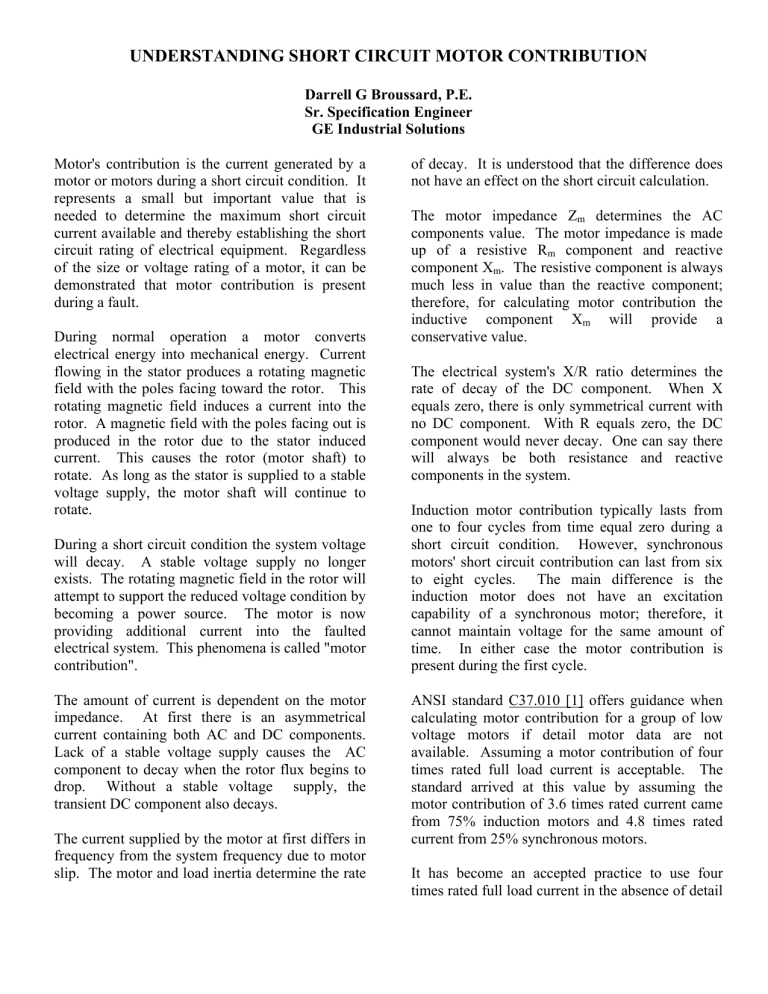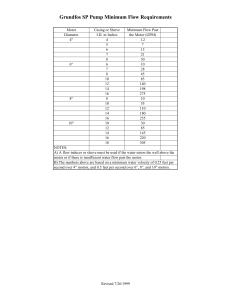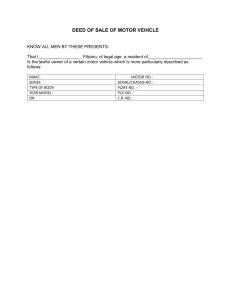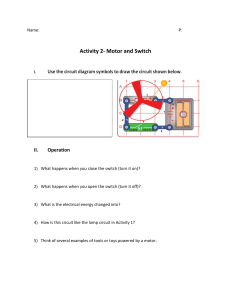
UNDERSTANDING SHORT CIRCUIT MOTOR CONTRIBUTION Darrell G Broussard, P.E. Sr. Specification Engineer GE Industrial Solutions Motor's contribution is the current generated by a motor or motors during a short circuit condition. It represents a small but important value that is needed to determine the maximum short circuit current available and thereby establishing the short circuit rating of electrical equipment. Regardless of the size or voltage rating of a motor, it can be demonstrated that motor contribution is present during a fault. During normal operation a motor converts electrical energy into mechanical energy. Current flowing in the stator produces a rotating magnetic field with the poles facing toward the rotor. This rotating magnetic field induces a current into the rotor. A magnetic field with the poles facing out is produced in the rotor due to the stator induced current. This causes the rotor (motor shaft) to rotate. As long as the stator is supplied to a stable voltage supply, the motor shaft will continue to rotate. During a short circuit condition the system voltage will decay. A stable voltage supply no longer exists. The rotating magnetic field in the rotor will attempt to support the reduced voltage condition by becoming a power source. The motor is now providing additional current into the faulted electrical system. This phenomena is called "motor contribution". The amount of current is dependent on the motor impedance. At first there is an asymmetrical current containing both AC and DC components. Lack of a stable voltage supply causes the AC component to decay when the rotor flux begins to drop. Without a stable voltage supply, the transient DC component also decays. The current supplied by the motor at first differs in frequency from the system frequency due to motor slip. The motor and load inertia determine the rate of decay. It is understood that the difference does not have an effect on the short circuit calculation. The motor impedance Zm determines the AC components value. The motor impedance is made up of a resistive Rm component and reactive component Xm. The resistive component is always much less in value than the reactive component; therefore, for calculating motor contribution the inductive component Xm will provide a conservative value. The electrical system's X/R ratio determines the rate of decay of the DC component. When X equals zero, there is only symmetrical current with no DC component. With R equals zero, the DC component would never decay. One can say there will always be both resistance and reactive components in the system. Induction motor contribution typically lasts from one to four cycles from time equal zero during a short circuit condition. However, synchronous motors' short circuit contribution can last from six to eight cycles. The main difference is the induction motor does not have an excitation capability of a synchronous motor; therefore, it cannot maintain voltage for the same amount of time. In either case the motor contribution is present during the first cycle. ANSI standard C37.010 [1] offers guidance when calculating motor contribution for a group of low voltage motors if detail motor data are not available. Assuming a motor contribution of four times rated full load current is acceptable. The standard arrived at this value by assuming the motor contribution of 3.6 times rated current came from 75% induction motors and 4.8 times rated current from 25% synchronous motors. It has become an accepted practice to use four times rated full load current in the absence of detail data on synchronous motors and induction motors of unknown size on the system. Multipliers of 3.6, 4 and 4.8 times are less than the motor lock rotor current [2]. This could account for a reduction of motor contribution at the start of the short circuit; and this assumption seems to explain this reduction. Approximations are a useful tool in the absence of detail motor data. For large motors or groups of large motors, lock rotor current, typically 5 to 7 times full load current, is used in place of the motor actual impedance will provide a very conservative value. For small motors or groups of small motors it is recommended that a value of 0.20 to 0.28 per unit be used in place of actual motor impedance data. In the very early stages of a project the amount of detail motor data or even a complete motor list is not available. Using approximation or a "rule of thumb" is acceptable. At this point the engineer needs to determine orders of magnitude of short circuit current. Is the system short circuit value approaching, or has it exceed a short circuit level. The engineer knows that the assumptions have provided a conservative value. The important point is the engineer has motor contribution factored into has calculation and his assumptions have provided a conservative value. After gathering all the equipment data the engineer may then conduct a detail short circuit study before purchasing equipment. REFERENCE: [1] Application Guide for AC High-Voltage Breaker on Symmetrical Current Bases, ANSI C37.010 1999 [2] Calculating Short Circuit Current With Contribution From Induction Motors Transactions On Industry Application Vol. 1A-18, No. 2, March/April 1982 [3] Application information Short Circuit Calculations For Industrial And Commercial Power Systems, General Electrical Company, GET-3550F, 0489




